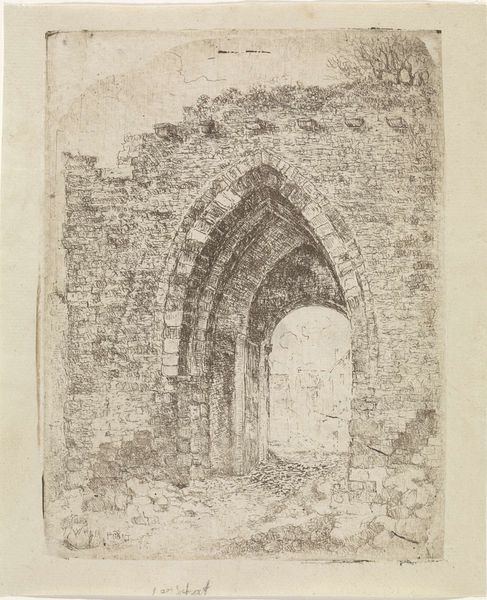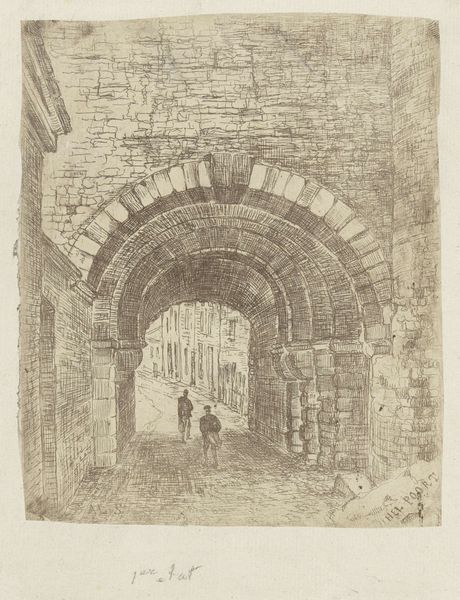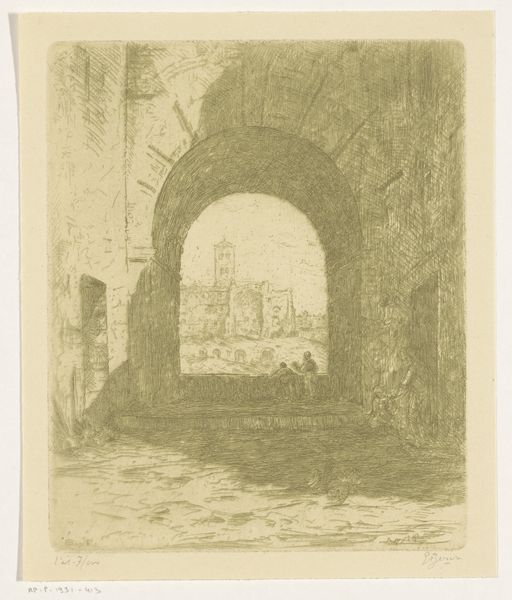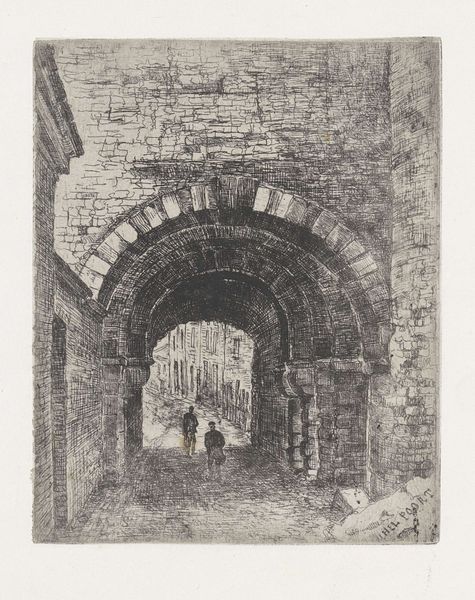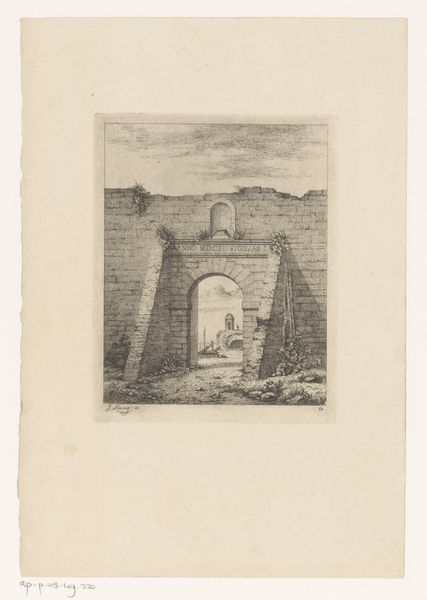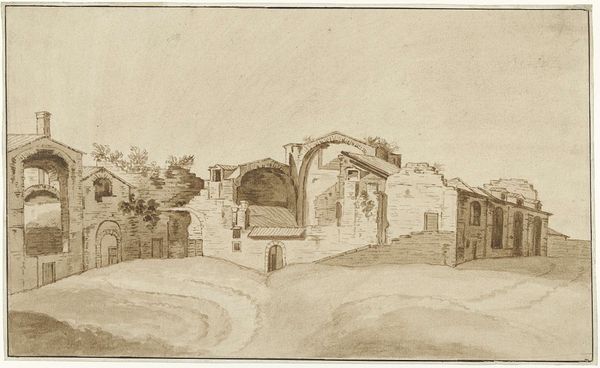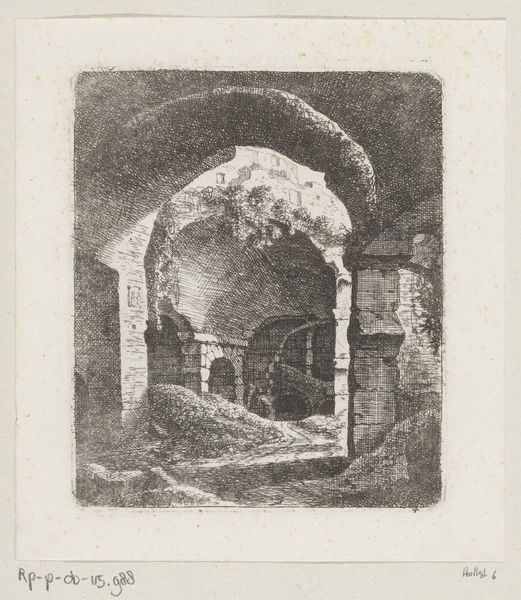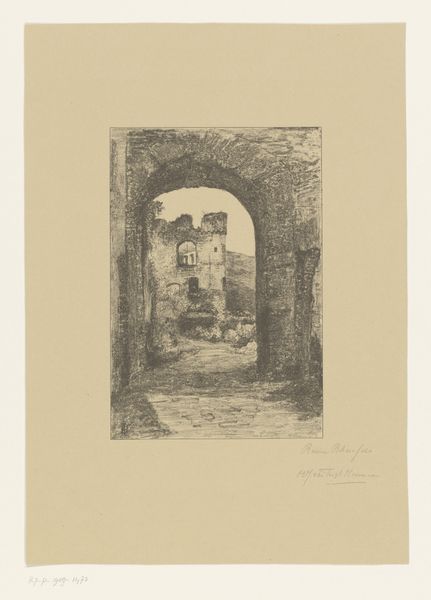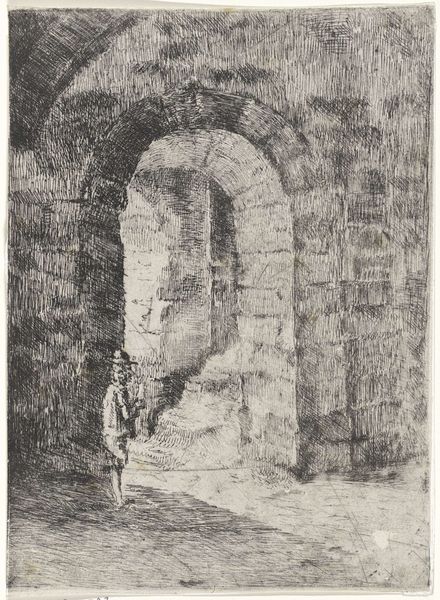
Ruïne van een oude stadspoort in Wyck te Maastricht 1830 - 1899
0:00
0:00
alexanderschaepkens
Rijksmuseum
drawing, print, etching
#
drawing
# print
#
etching
#
landscape
#
etching
#
cityscape
#
realism
Dimensions: height 198 mm, width 151 mm
Copyright: Rijks Museum: Open Domain
Alexander Schaepkens made this etching of a ruined city gate in Maastricht, likely in the mid-19th century. It gives us insight into the cultural fascination with ruins during this period. Consider the social and political context: the Netherlands had only recently become a kingdom, and there was great interest in creating a shared sense of national identity. Picturesque ruins, like this city gate, served as symbols of a glorious past, reminding viewers of battles fought and won and evoking feelings of national pride. Maastricht, with its rich history and Roman origins, was a prime location for these kinds of images. This etching is interesting, also, in terms of institutional history. Schaepkens was not only an artist but also the director of the Stadsteekenacademie, the municipal drawing academy. This reminds us that artistic production was often tied to institutional structures and local agendas. To understand this work better, we might look at local archives to find out about the gate itself, how it functioned in the city, and the artist's potential relationship with the site.
Comments
No comments
Be the first to comment and join the conversation on the ultimate creative platform.
